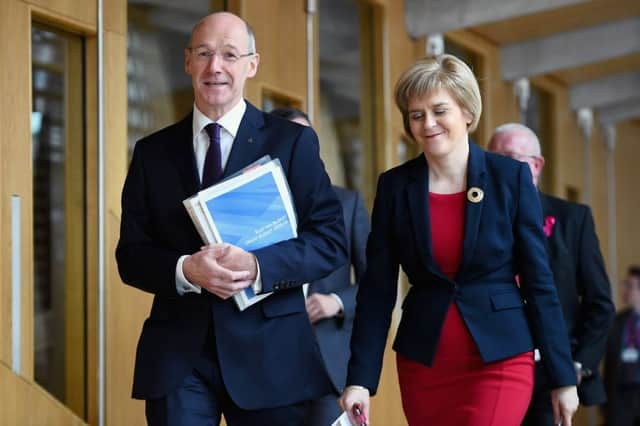How do Scots want to see new Holyrood tax powers used?


Since 6 April, Scotland has had its own rate of income tax. The new power allows the Scottish Parliament to set a different income tax rate to the rest of the UK. It has also become an important feature of the Scottish Parliament election campaigns.
The SNP government is not proposing to change the rate of income tax and has complained that the new power is restrictive because any changes have to apply across all income tax bands at the same level – if the basic rate goes up from 20p to 21p in the pound then the higher rate has to go up by the same amount, from 40p to 41p.
Advertisement
Hide AdAdvertisement
Hide AdHowever, Scottish Labour and the Scottish Liberal Democrats are arguing for a 1p increase in income tax.
So what do the Scottish public want? At ScotCen Social Research we have been asking a question about this issue almost every year since devolution as part of our Scottish Social Attitudes (SSA) survey.
Specifically we ask whether people think the government should choose to increase taxes and spend more on health, education and social benefits, reduce taxes and spend less, or keep the level of taxes and spending the same.
What is striking is the small proportion of people who favour cutting taxes and spending less. Since 1999 this has never been higher than 7 per cent. The rest of the Scottish public are evenly split. Some 46 per cent would prefer to see tax and spending remain the same, while 47 per cent want the government to raise taxes and spending.
Yet in the early years of the Scottish Parliament more people were in favour of increasing taxes, peaking in 2001 at close to two-thirds (63 per cent). This fell to a low of 37 per cent in 2009 following a period of increased government spending. In the years following the election of the Conservative-Liberal Democrat coalition at Westminster, support for increasing taxes and spending on health, education and social benefits has been on the rise – our latest data has it at the highest level since 2004.
What does this all mean for Scotland’s political parties? The views of Conservative identifiers are the clearest cut – 63 per cent favour keeping taxes the same. Support for increasing taxes is highest among people who identify with Labour or the SNP – but there are sizeable minorities of around two-fifths who would prefer to see tax and spending levels kept the same.
So the Scottish rate of income tax and the tax-raising powers set to come in 2017 bring challenges for the parties in terms of satisfying the electorate.
l Susan Reid is research director at ScotCen Social Research